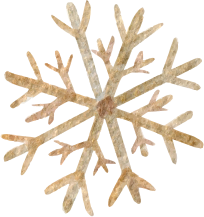Cheyenne Facts & History
On July 4, 1867 the first tents were pitched on the site now known as Cheyenne. Cheyenne means "aliens" or "people of foreign language." The Sioux Indians gave this name to the Indian tribe "Dzitsistes," who roamed the open plains. Their spelling was Shyenne. The first residents were men who moved west to work on the Union Pacific Railroad. The majority of settlers moved away when the railroad was completed in November of that same year. Those who stayed joined others who came to form this new thriving western town. By 1869 Cheyenne was home to a variety of residents, including railroad gangs, soldiers from Fort D.A. Russell (which is now F.E. Warren Air Force Base), and employees From Camp Carlin, a supply camp for all the northern posts on the Indian frontier.
This mostly rough population gave entrance to the type of entertainment that became associated with the "Wild West." Cheyenne was a lively place with five "variety" theaters in operation simultaneously. Every other building was a saloon. The shows had regular stages and gave what was called "burlesque" performances with plenty of female performers.
Cheyenne did not remain a rowdy town for long, as the railroad that initiated Cheyenne's beginnings continued to play a major role in its development. The Union Pacific, one of the most heavily traversed railroads, passed through Cheyenne bringing some of the best shows of the times. After the opera house was erected in 1882, performers such as Lily Langtry and Emma Nevada and their troupes stopped in Cheyenne on their way to San Francisco.
The railroad also provided direct access to the East, thereby enabling Cheyenne to receive the latest styles in furniture, the most recently published magazines and newspapers, and the most fashionable apparel from eastern salons. The cultural ideals of the East were virtually transplanted to Cheyenne via the railroad. By 1875 the population had grown to almost five thousand. Residents enjoyed a social life which was unique for the West and on a par with many cities of a similar size in the East. In fact, Cheyenne's culture far surpassed many of the eastern cities.
The cattle industry was another influencing factor in Cheyenne's development. Purebred Hereford cattle were raised at the famous Wyoming Hereford Ranch (near Cheyenne) as early as 1880. The town attracted many wealthy men from the East and Europe, bringing with them their impeccable social amenities. Many were graduates of the most outstanding universities in England and America. Many cattle barons spent their summers in Cheyenne, wintering in Europe. It was during this time that the world famous "Cheyenne Club" was established. It's membership included many of these men. The club was lavishly furnished like a club of its scale in England. It had a wide verandah, large dining room, billiards room, card rooms, reading room, and a lounge on the main floor. The former Cheyenne Club stood on the site that later housed the Cheyenne Chamber of Commerce, located on east 17th street.
Location
Cheyenne is located near the geographical and time center of North America. Strategically situated at a major transportation hub (the intersection of Interstates 25 and 80 and two major railroads), it is a developing center of commerce. Only 90 minutes north of Denver, Colorado, Cheyenne sits as the northern anchor city of the Front Range of the Rocky Mountains. Cheyenne is the capital of Wyoming, the seat of Laramie County and the site of F.E. Warren Air Force Base.
In 1834, a rambling log stockade called Fort William was erected at the confluence of the Laramie and North Platte Rivers by the veteran fur traders, William Sublette and Robert Campbell. By 1836, it had become an important resting place and haven for the trail-weary Oregon-bound…





